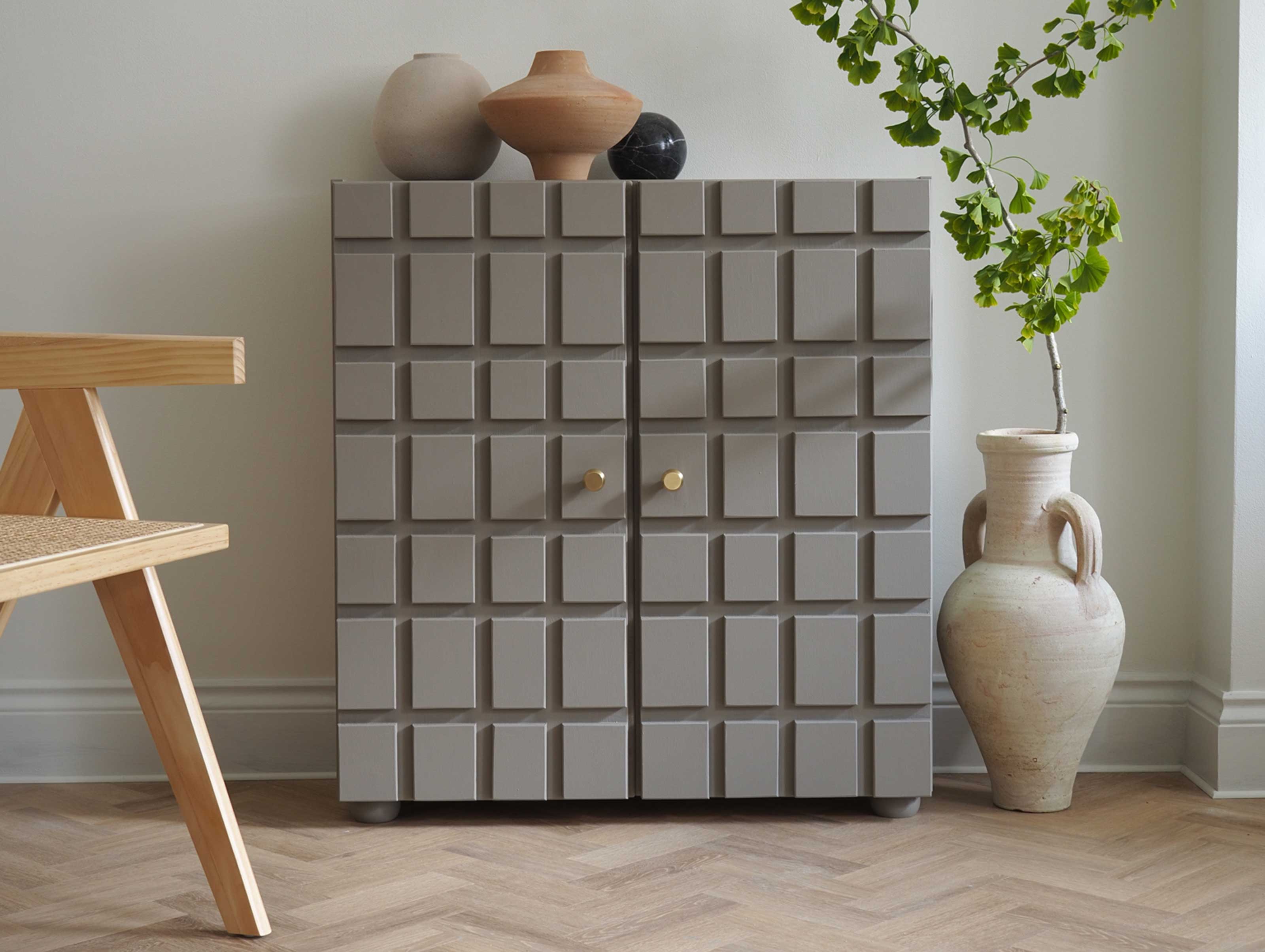A simple hack for IKEA's IVAR makes this budget-friendly cabinet look a million times more expensive
Inspired by a designer piece, this easy hack transforms one of IKEA's most affordable cabinets


The simplicity of IKEA's flat-pack furniture is one of the many reasons we adore the iconic Scandi brand. Certain items though, such as the IVAR cabinet, take the meaning of simple to a whole new level. The solid pine cabinet is sold in its rawest form possible which, to some people, may err too closely on the plain and ordinary side. For others, however, it offers a blank canvas for untold creative possibilities.
That's exactly what interior stylist and home renovator Luke Arthur Wells saw in his side cabinet. His sharp eye for potential combined with a good helping of DIY know-how gave birth to this striking IKEA hack which uses small square and rectangular-shaped panels stuck onto the doors' surface. If you're new to the DIY game, it doesn't more inventively simple than this.
'I was inspired by a piece of furniture from one of my favorite interior designers Kelly Wearstler,' Luke says, 'but with a slightly stripped back design that would be less complicated to DIY.' With the added help of some simple circular legs, subtle brass knobs from Plank Hardware, and a lick of smokey paint, he transformed his ordinary IVAR into an expensive-looking contemporary cabinet that brings wonderful texture to his living space. Here's how he did it.

1. Cut the panels for the front

After plotting out his design, mirrored across each of the doors of the IKEA IVAR hack, Luke set about cutting out small squares of leftover sheet timber using his Ryobi power tools.
With his design, there were 56 blocks altogether to cut. 'It's so important to number each piece as you do it,' Luke says. 'They're all a similar size, but slightly different, so without the numbers, it'll take you forever to find the right order to put them in.'

Once cut, he used a Ryobi Palm Sander (available from Amazon) to sand the edges for a better finish, while also slightly sanding the front-facing corner to create a bevel around each block.
2. Space and glue

To make sure the spacing was even between each block, Luke cut a strip of 3/4 inch molding to use as spacers. Starting at one corner, he glued the blocks down, moving the spacers as he went.
The Livingetc newsletters are your inside source for what’s shaping interiors now - and what’s next. Discover trend forecasts, smart style ideas, and curated shopping inspiration that brings design to life. Subscribe today and stay ahead of the curve.
'Choosing an instant adhesive was key - the blocks would have undoubtedly shifted while drying otherwise. I always use something like a mitre adhesive (on Amazon), which is the best thing for a quick bond, and is strong enough for a simple project like this where we're sticking two wooden surfaces together.'
3. Add legs and handles

IKEA's IVAR sits on the floor if you don't have it wall-mounted, but adding a set of feet is an easy way to make this IKEA storage hack look more expensive. Luke chose some simple bun feet from Amazon to raise it up slightly.
Luke also add the Plane knob from Plank Hardware to his design, however, as he'd add depth the door, he needed to create an indentation into the back so that the fixing would still work. 'I used a countersink drill bit in my Ryobi One+ Cordless drill around the hole created for the handle on the back of the door,' Luke says. 'This meant the fixing would reach through the new, thicker door.'
4. Paint and varnish
Luke finished his IVAR in a furniture paint that didn't require priming first. 'Because the IVAR is untreated, it's a super easy piece of IKEA furniture to paint,' Luke explains.
To make the finish harder wearing, Luke suggests using a matt varnish to finish. 'I've tried a few out before, but this Polyvine Dead Flat finish from Amazon is the best I've found - well worth having a bottle to hand,' he says.
5. Fix to the wall

Luke's last piece of advice? Use those wall fixings on this upcycle. 'It's a good idea anyway, especially if you have children running around, but this hack adds extra weight to the doors, so it's more susceptible to tipping if not fixed to the wall.'

Lilith Hudson is a freelance writer and regular contributor to Livingetc. She holds an MA in Magazine Journalism from City, University of London, and has written for various titles including Homes & Gardens, House Beautiful, Advnture, the Saturday Times Magazine, Evening Standard, DJ Mag, Metro, and The Simple Things Magazine.
Prior to going freelance, Lilith was the News and Trends Editor at Livingetc. It was a role that helped her develop a keen eye for spotting all the latest micro-trends, interior hacks, and viral decor must-haves you need in your home. With a constant ear to the ground on the design scene, she's ahead of the curve when it comes to the latest color that's sweeping interiors or the hot new style to decorate our homes.